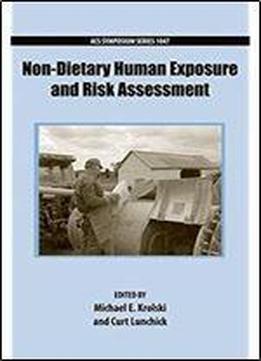
Non-dietary Human Exposure And Risk Assessment (acs Symposium Series)
by Michael Krolski /
2011 / English / PDF
2.1 MB Download
The Protection of Subjects in Human Research rule by the USEPA, including the establishment of the Human Studies Review Board (HSRB), has resulted in changes to both study design and study evaluation processes, particularly with respect to ethical considerations. Non-Dietary Human Exposure and Risk Assessment is a compilation of the presentations given in a symposium of the same name at the 238th ACS National Meeting in Washington D.C. The purpose of the symposium was to provide a forum for scientists from industry, academia, and government to share investigative methods used to generate data for use in non-dietary human risk assessments and to share methodology for performing and evaluating those assessments.
This compilation is intended to provide the reader with a concise overview of the current status of both the scientific and regulatory aspects of non-dietary human exposure and risk assessment as applied to pesticides. It is the hope of the editors that it will also be the starting point for discussions leading to the further refinement of study and risk assessment design, data evaluation, and regulatory harmonization.
Three major areas are covered in this symposium edition. The first area is regulatory issues including the development of the Protection of Subjects in Human Research rule and the HSRB, statistical procedures involved in designing human exposure studies, handling of the data generated in those studies, and quality assurance processes related to worker exposure studies. The second area, study design, includes processes for the identification and recruitment of volunteers for human exposure studies, overviews of several studies that have been recently performed, the development of procedures for evaluating the resulting data by Regulatory Agencies, and efforts towards international cooperation in the generation and use of exposure data. The final area, methodology, includes examples of the development of methods for the analysis of samples generated in non-dietary human exposure studies with particular emphasis on the use of hyphenated techniques and the development of a model for determining greenhouse exposures that is currently being used in Europe.











